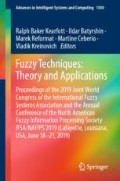Abstract
Techniques for the generation of constrained and optimized geometry play a key role in the automated design of ships, particularly in the early stages. So called “form parameter design” systems are state-of-the-art for such ship hull geometry generation tasks. These systems solve a sequence of constrained nonlinear optimization problems to generate ship hull form geometry which conforms to constraints (form parameters). With such a system, a human expert, or search algorithm capable of discarding infeasible designs, is needed to pick constraint combinations that are at once feasible and also result in a high quality design. Simply finding a feasible set of form parameters is non-trivial enough that form parameter design of ship hulls has remained mostly an academic practice. Commercial tools exist, but their uptake by industry has been slow because this issue has given such tools a reputation for being hard to use.
In this paper a modified approach for hull shape generation is proposed, combining form parameter design with interval constraint logic programming. We use a constraint solver to pre-process the design space, ensuring all constraints are feasible. This ensures that the form parameter design tool always operates within the feasible sub-domain of the total design space. The new approach is briefly described. Its effectiveness is demonstrated by using a random number generator together with the constraint solver to generate feasible design candidates, and then valid ship hull geometry is generated by our form parameter design program.
Access this chapter
Tax calculation will be finalised at checkout
Purchases are for personal use only
References
Abt, C., Harries, S., Hochkirch, K.: Constraint management for marine design applications. In: \(8^{\text{th}}\) International Symposium on Practical Design of Ships and Other Floating Structures (PRADS 2004), Lübeck-Travemünde, Germany (2004)
Benhamou, F.: Interval Constraint Logic Programming, pp. 1–21. Springer, Heidelberg (1995). https://doi.org/10.1007/3-540-59155-9_1
Bertram, V.: A survey on knowledge-based systems for ship design and ship operation. Int. J. Intell. Eng. Inform. 2(1), 71–90 (2013). https://doi.org/10.1504/IJIEI.2013.056067
Birk, L., Harries, S.: Automated optimization – a complementing technique for the hydrodynamic design of ships and offshore structures. In: 1\(^{\text{st }}\) International Conferecne on Computer Applications and Information Technology in the Maritime Industries (COMPIT), Potsdam, Germany (2000)
Birk, L., McCulloch, T.L.: Robust generation of constrained b-spline curves based on automatic differentiation and fairness optimization. Comput. Aided Geom. Des. 59, 49–67 (2018). https://doi.org/10.1016/j.cagd.2017.11. http://www.sciencedirect.com/science/article/pii/S0167839617301474
Bole, M., Lee, B.: Integrating parametric hull generation into early stage design. Ship Technol. Res./Schiffstechnik 53, 115–137 (2006)
Byrd, W.: Relational programming in minikanren: techniques, applications, and implementations. Ph.D. thesis, Indiana University (2009)
Christianson, B.: Automatic Hessians by Reverse Accumulation. Other Titles in Applied Mathematics, 2nd edn. SIAM, Philadelphia (2008)
Cleary, J.: Logical arithmetic. Future Comput. Syst. 2(2), 125–149 (1987)
Collavizza, H., Delobel, F., Rueher, M.: A note on partial consistencies over continuous domains. In: Proceedings of the 4th International Conference on Principles and Practice of Constraint Programming, CP 1998, pp. 147–161. Springer, London (1998)
Friedman, D., Byrd, W., Kiselyov, O.: The Reasoned Schemer. MIT Press, Cambridge (2005)
Hansen, E.,W̃alster, W.: Global Optimization Using Interval Analysis, 2nd edn. Marcel Dekker, New York City (2004)
Harries, S.: Parametric design and hydrodynamic optimization of ship hull forms. Ph.D. thesis, Technische Universität Berlin (D83), Berlin (1998)
Harries, S., Nowacki, H.: Form parameter approach to the design of fair hull shapes. In: \(10^{\text{th}}\) International Conference on Computer Applications in Shipbuilding (ICCAS 1999), Massachusetts Institute of Technology, Cambridge, MA (1999)
Kahan, W.M.: A more complete arithmetic, lecture notes for a summer course at the University of Michigan (1968)
Kearfott, B.: Rigorous Global Search: Continuous Problems. Nonconvex Optimization and its Applications, vol. 13. Kluwer Academic Publishers Group, Norwell/Dordrecht (1996)
Kim, H.: Parametric design of ship hull forms. Ph.D. thesis, Technische Universität Berlin (D83), Berlin (2004)
Kim, S., H.C. K., Lee, Y.: Initial hull form design using fuzzy modeling. Ship Technol. Res./Schiffstechnik 43, 175–180 (1996)
McCulloch, T.L.: Feasible form parameter design of complex ship hull form geometry. Ph.D. thesis, University of New Orleans (2018). https://scholarworks.uno.edu/td/2552
Nowacki, H., Bloor, M., Oleksiewicz, B. (eds.): Computational Geometry for Ships. World Scientific, Singapore (1995)
Rossum, G.: Python tutorial, technical report cs-r9526. Technical report, Centrum voor Wiskunde en Informatica, Amsterdam (1995)
Author information
Authors and Affiliations
Corresponding author
Editor information
Editors and Affiliations
Rights and permissions
Copyright information
© 2019 Springer Nature Switzerland AG
About this paper
Cite this paper
McCulloch, T.L. (2019). Constraint Programming Enabled Automated Ship Hull Geometric Design. In: Kearfott, R., Batyrshin, I., Reformat, M., Ceberio, M., Kreinovich, V. (eds) Fuzzy Techniques: Theory and Applications. IFSA/NAFIPS 2019 2019. Advances in Intelligent Systems and Computing, vol 1000. Springer, Cham. https://doi.org/10.1007/978-3-030-21920-8_72
Download citation
DOI: https://doi.org/10.1007/978-3-030-21920-8_72
Published:
Publisher Name: Springer, Cham
Print ISBN: 978-3-030-21919-2
Online ISBN: 978-3-030-21920-8
eBook Packages: Intelligent Technologies and RoboticsIntelligent Technologies and Robotics (R0)

